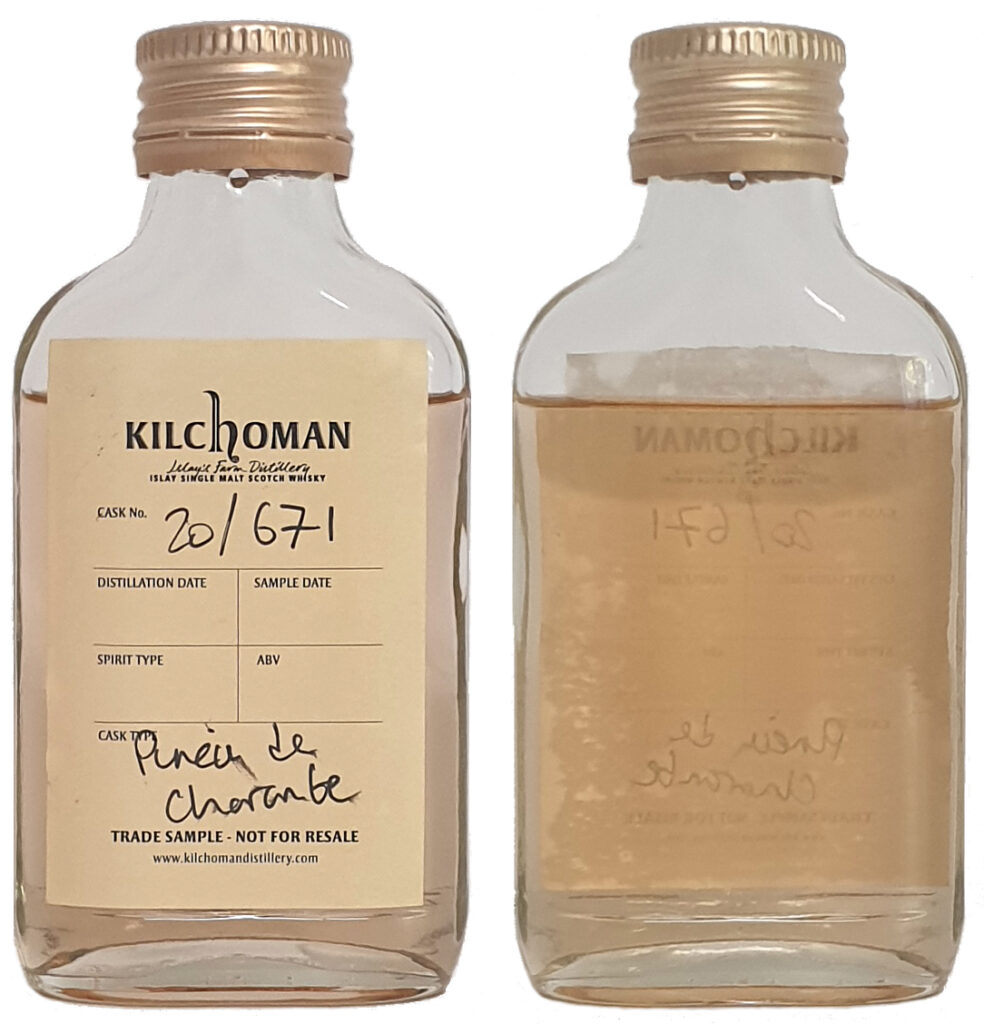Taste Guide: Pineau des Charentes Cask
Pineau des Charentes casks are among the cask varieties that have been stored in Kilchoman warehouses for some time (which is why they are already listed here), but Kilchoman has not yet released a bottling of them.
In 2020, Kilchoman acquired a few 500-litre Pineau des Charentes casks from a French cooperage. In mid-2024, the whisky maturation in these casks was still barely advanced, which Anthony Wills attributes to the fact that these casks were probably not the freshest. Unlike other wine casks, which Kilchoman has often bottled in the past at an age of 5 years, we will therefore probably have to wait a few more years for a Pineau des Charentes release.
.

.
Pineau des Charentes, (Pineau Charentais, or simply Pineau) is a regional aperitif of western France, made in the départements of Charente, Charente-Maritime, and (to a lesser extent) Dordogne. While popular within its region of production, it is less well known in other regions of France and somewhat uncommon abroad.
It is a fortified wine (mistelle or vin de liqueur), made from either fresh, unfermented grape juice or a blend of lightly fermented grape must, to which a Cognac eau-de-vie is added and then matured.
The dominant white variety of pineau is made using the grapes Ugni blanc, Folle blanche and Colombard, with occasional Sémillon, Sauvignon blanc and Montils. The mixture is aged for at least 18 months, including a minimum of 8 months in oak barrels. It is typically two years old when bottled.
The resulting drink is between 16% and 22% ABV (but in commercial practice nearly always 17%) and is traditionally a deep gold in color, but colors and qualities vary from vineyard to vineyard, depending on the lie of the land, the soil composition and the grape used. The taste is predominantly sweet, but is balanced by both acidity and the increased level of alcohol.
Finer varieties are aged for over 5 years in barrel, and often for several decades. After 5 years, it is called vieux pineau, and if barrel aged for more than 10 years, très vieux pineau. Très vieux pineau is more of a rarity, given its more stringent quality and maturation standards. Normandin-Mercier is a Cognac house known for producing a fine, long-lived example of très vieux pineau. Before these age designations can be used on the label, an examining commission must certify both the duration of aging and the finished product.
The red and rosé varieties, very popular locally, are made from the grapes Cabernet Franc, Cabernet Sauvignon, and Merlot, and are aged for at least 14 months, including a minimum of 8 months in oak barrels. The finished drink is again between 16% and 22% ABV (usually 17%) and varies between a deep mahogany brown colour and a very dark pink.
The annual production of pineau is around 14,000,000 litres. Around 80% of this is made in the Charente-Maritime département. Its production is controlled under the Appellation d'Origine Contrôlée 'vin de liqueur' classification, though it is not a wine in the ordinary sense. In principle the same producer grows the grapes, makes the wine and distills it into brandy, presses the fresh grape juice and then blends and matures the result. The geographical zone authorized for the production of Pineau des Charentes AOC is practically identical with that for Cognac, and in fact many of the artisanal producers of pineau (numbering several hundred) also sell their own Cognac.
When a good harvest is expected, the best grapes may be picked by hand, however most producers harvest most of their crop mechanically. Very strict rules and formulae for the ratios of brandy and fresh grape juice are followed by each vintner and the process is even more tightly controlled for organic producers. The year of the pineau depends on the year of the eau de vie and not on the grape juice, as the juice must be freshly squeezed from freshly picked grapes – literally squeezed and mixed the same day as harvesting.
The act of mixing the eau de vie with the fresh grape juice is referred to as "assemblage", assembly or blending. It stops the fermentation of the grape must through a process called "mutage".
An increasing number of vineyards in the area now produce and sell pineau in which both the grape juice and the brandy come from organically-grown grapes. Their products have certification.
(From Wikipedia, the free encyclopedia)
